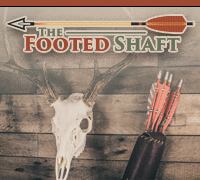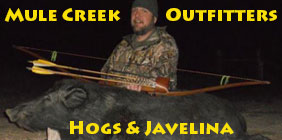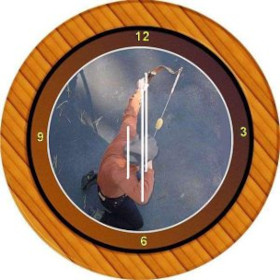Unless the earth has changed it's axis, the rut shouyld take place the same time as it has for 1000's of years.
Photo-period dictates the rut. Now, there can be some issue's down south, if you have poor buck to doe ratio and over-population that results in lots of late dropped fawns. But that's more of man-made problem and QDM may be the fix needed.
Here's a good read...
Whitetail Myths & Truths
With the amount of information on the Internet, you can’t believe everything you read. My good friend Bob Humphrey, a wildlife biologist and outdoor writer, and I were discussing some of the major fallacies about whitetails and, more specifically, whitetail hunting. We both agreed that for the most part, wildlife biologists have fallen short in educating the most underused segment of wildlife management — hunters. At the same time, hunters (and biologists, too) have failed miserably in educating the public on the benefits of hunting.
Recently, the Quality Deer Management Association (QDMA) signed up member number 50,000. With many state wildlife agencies feeling the pinch of fiscal shortages, the QDMA has filled a niche to inform and educate all us deer fanatics on the difference between fact and fiction.
Many hunters still believe the following myths to be gospel.
Fallacy #1: The moon determines the timing of the rut.
Many diehard hunters believe rut timing is dynamic and correlates to the moon phase. In short, depending on where you live, some believe the second full moon after the fall equinox, which occurs on different dates from year to year, determines the timing of the rut.
Although some outdoor writers may claim that moon phase or position dictates rut timing or movement patterns of deer, no one can produce a magic formula to make it so. Here’s my advice: Instead of planning your vacation time to hunt based on the moon theory, hunt before, during, and after the peak of the rut. For the majority of the country, the rut correlates to photoperiod or the decreasing amount of daylight hours — the second week of November across a majority of whitetail range.
Even if you still don’t believe that photoperiod triggers the rut, let’s assume you’re the deer god. As deer god, you would want your does to drop their fawns during the time of peak nutrition. This time period during the end of May (across much of the whitetail’s range) ensures the quality and quantity of does’ milk to be at their highest. Under the moon theory, the fall equinox can vary by more than one month, which would mean that fawns may or may not drop during the period of peak nutrition. As the deer god, you’re smart enough to see the fallacy in that plan. Many of your does and fawns would die due to inadequate amounts of quality milk. To summarize, the moon theory occurs in magazines and not in the wild.
Fallacy #2: The rut has four distinct phases: seeking phase, chase phase, breeding phase, and post-breeding phase.
Just like the moon theory, these phases of the rut are manmade descriptions, and no sound data whatsoever delineate the rut into these phases. Like almost all mammals, some does enter estrus early (prerut), most are on time (rut), and some are late (post-rut). The percentage of actual breeding fits very well on a classic bell curve (see Figure 1). Many does on the right-hand side of the curve are fawns breeding for the first time. Obviously, not all rutting activity can be assigned to a specific phase. Some bucks may be running does while others are actually breeding, and still others are bedding alone.
Fallacy #3: Home range for all whitetails is one square mile.
Although most hunters believe a deer’s yearly home range is roughly one square mile, home range size depends primarily on the quality of habitat. A buck could live his entire life in less than 450 acres, or two-thirds of a square mile, if the habitat is of high-enough quality. Similarly, many deer that live in urban environments have home ranges smaller than 400 acres. Conversely, deer that live in poor habitat may have annual home ranges of many square miles. When biologists combine the various data sets, they simply say that the home ranges of whitetails average out to roughly one square mile.
These are actual conception data from the state of Pennsylvania. Note the classic bell-shaped curve and the tail on the right-hand side. This is due to doe fawns breeding for the first time. Other states most likely follow the same trend, with highly productive Midwest states showing a higher percentage of fawn breeding on the right-hand side of the curve.
Fallacy #4: Dominant bucks do most of the breeding.
Although many believe this to be true, dominance in the deer herd comes from two factors: weight and attitude. New research shows that even if a buck sports Boone and Crockett headgear, on average he may be responsible for only three fawns per year. Additional genetic studies have shown that even in herds with balanced age structures, bucks of 31⁄2 or 41⁄2 years of age are the dominant breeders. So far, the world record stud buck sired only six offspring per season. Note: This does not include breeding attempts, only the number of fawns sired.
Fallacy #5: Mineral blocks ensure big antlers.
Mineral blocks do nothing to increase antler production. With that said, mineral blocks can’t hurt, either. Because mineral supplements are relatively cheap to purchase, why not supply deer with mineral supplements? Look for products that have a calcium-to-phosphorus ratio of 2:1, with no more than 35 percent salt. You’ll find many products containing 90 percent or more salt or sodium chloride (NaCl). If you want to spend your hard-earned money on a bag of salt, I’d suggest you go to the grocery store and buy some for a whole lot less money. Yes, deer love salt, but it offers little nutrition, and other minerals and trace elements are more important. Additionally, deer primarily use mineral supplements during the late winter to early fall time period. Note: All states east of the Mississippi River lack selenium (Se).
Fallacy #6: Buck-to-doe ratios are infallible.
Many state wildlife agencies will tell you they have a buck-to-doe ratio of 1:2. Hunters will tell you it’s more like one buck to eight-plus does. In reality, both biologists and hunters are correct. When biologists determine sex ratios, they look at adult deer. In contrast, hunters include all antlerless deer, such as button bucks, in their estimation of sex ratio. Believe it or not, it’s biologically impossible to have a skewed sex ratio of more than one buck to eight does — although I’ve witnessed herds that come very close.
Based on common population models, most biologists assume a sex ratio of one buck to one doe at conception. I’ll argue that biologists need to re-examine this assumption. Various data demonstrate a bias toward bucks at birth. However, button bucks definitely suffer a higher mortality rate than do doe fawns, so by the time hunting season comes along, the sex ratio of yearling deer balances out to a 1:1 ratio.
With that said, I’ve examined reproductive tracts in urban areas that reveal sex ratios of 65 percent
bucks to 35 percent does. Obviously, these data don’t correlate to a whole state, but it’s important to know that many population models were established when deer populations were just starting to increase. For some time now, deer populations have met or grossly exceeded carrying capacities of their habitat. Thus, in some herds, the sex ratios of fetuses may not be 1:1.
CJ’s Summary: Like many of you, I’m a deer geek and proud of it. For more biological information on deer, be sure to check out the Quality Deer Management Associ-ation at 1-800-209-DEER call for membership
Read more:
http://www.bowhunter.com/feature_articles_bw_whitetailmyths_200808.html#ixzz2hKIQJgIa













